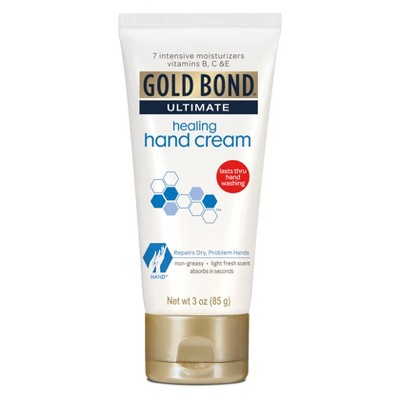PRODUCT REVIEW

belif Aqua Bomb Hydrating Body Moisturizer
Can it cause trouble?
Cheaper alternatives
What can the product work for?
Works for
Moisturizing
What does the product description say?
Aqua Bomb Hydrating Body Moisturizer
Anti-oxidation
Honesty check
How honest is this product?
| Promise | Can it deliver? |
|---|---|
| Moisturizing |
Buy now
We receive a small commission for purchases made through these links at no cost for you. Thank you for your support! Learn more
 US Retailers
US Retailers
 CA Retailers
CA Retailers
Can it cause trouble?
- Overall product irritation risk
- Acne & comedogenic risk ingredients: 0
Potential irritants
Comodogenic ingredients
User reviews (0)
Similar products & dupes
 belif - Aqua Bomb Hydrating Body Moisturizer |  Milk Touch - Green Apple Collagen Cream Sponsored |  Bepanthen - Derma Intense Body Repair Balm |  Maruderm - Hyaluronic Acid Moisturizer Face & Body Cream |  Olay - Anti-Aging Body Lotion |  Gold Bond Ultimate - Men's Essentials Everyday Lotion |  Gold Bond - Ultimate Healing Hand and Body Lotions |  Cetaphil - Body & Face Moisturizing Lotion Unscented |  SNP - Peptaronic Cream |  Nursem - Ultra Caring Body Balm |  Milk Touch - Green Apple Collagen Cream |  preange - Vit B5 Emulsion | |
| Price | ||||||||||||
| WIMJ similarity score |
69%
|
74%
|
74%
|
73%
|
72%
|
72%
|
72%
|
71%
|
71%
|
69%
|
69%
| |
| Key ingredients |
| Common:
Other:
| Common:
Other:
| Common:
Other:
| Common:
Other:
| Common:
Other:
| Common:
Other:
| Common:
Other: | Common:
Other:
| Common:
Other:
| Common:
Other:
| Common:
Other:
|
| Irritancy | IRRITANCY
HIGH
| IRRITANCY
MEDIUM
| IRRITANCY
LOW
| IRRITANCY
LOW
| IRRITANCY
MEDIUM
| IRRITANCY
MEDIUM
| IRRITANCY
MEDIUM
| IRRITANCY
LOW
| IRRITANCY
MEDIUM
| IRRITANCY
LOW
| IRRITANCY
MEDIUM
| IRRITANCY
LOW
|
| Potential Irritants |
|
|
|
|
|
|
|
|
|
|
|
|
| All ingredients |
|
|
|
|
|
|
|
|
|
|
|
|
Ingredients & concentrations
All ingredients
Key Actives
Potential irritants
Comodogenic ingredients
All ingredients
Ingredient list view
Water, Dipropylene glycol, Glycerin, Methyl trimethicone, C13-15 alkane, Coco-caprylate/caprate, Butylene glycol, 1,2-hexanediol, Caprylic/capric triglyceride, Pentaerythrityl tetraethylhexanoate, Stellaria media extract, Alchemilla vulgaris leaf extract, Equisetum arvense leaf extract, Urtica dioica leaf extract, Avena sativa kernel extract, Calendula officinalis flower extract, Nepeta cataria extract, Rubus idaeus leaf extract, Baptisia tinctoria root extract, Sodium hyaluronate crosspolymer, Hydrolyzed hyaluronic acid, Hydrolyzed sodium hyaluronate, Hydroxypropyltrimonium hyaluronate, Niacinamide, Polymethylsilsesquioxane, Panthenol, Pentaerythrityl tetraisostearate, Phenyl trimethicone, Carbomer, Tromethamine, Lactobacillus/soybean ferment extract, Polyglyceryl-10 stearate, Hydroxyethyl acrylate/sodium acryloyldimethyl taurate copolymer, Polyglyceryl-10 oleate, Saccharomyces/potato extract ferment filtrate, Saccharomyces/barley seed ferment filtrate, Acrylates/c10-30 alkyl acrylate crosspolymer, Ammonium acryloyldimethyltaurate/vp copolymer, Malachite extract, Trisodium edta, Sorbitan isostearate, Pentylene glycol, Tocopherol, Ethylhexylglycerin, Citrus aurantium dulcis peel oil, Citrus aurantifolia oil, Pelargonium graveolens flower oil, Rosmarinus officinalis leaf oil, Limonene, Citronellol, Geraniol, Citral, Linalool
Sources
- Glycerol and the skin: holistic approach to its origin and functions
- Safety Assessment of Alkyl Esters as Used in Cosmetics
- The influence of alkane chain length on the skin irritation potential of 1,2-alkanediols
- Safety Assessment of Pentaerythrityl Tetraesters as Used in Cosmetics
- Topical application of Calendula officinalis (L.): Formulation and evaluation of hydrophilic cream with antioxidant activity
- The seamy side of natural medicines: contact sensitization to arnica (Arnica montana L.) and marigold (Calendula officinalis L.)
- Final report on the safety assessment of Calendula officinalis extract and Calendula officinalis
- Contact dermatitis as an adverse reaction to some topically used European herbal medicinal products – part 1: Achillea millefolium–Curcuma longa
- Efficacy of a New Topical Nano-hyaluronic Acid in Humans
- Physiochemical properties and application of hyaluronic acid: a systematic review
- Niacinamide - mechanisms of action and its topical use in dermatology
- Gehring, W. (2004). Nicotinic acid/niacinamide and the skin. Journal of Cosmetic Dermatology, 3(2), 88–93. doi:10.1111/j.1473-2130.2004.00115.x
- Skin moisturizing effects of panthenol-based formulations
- Safety Assessment of Panthenol, Pantothenic Acid, and Derivatives as Used in Cosmetics
- Safety Assessment of Pentaerythrityl Tetraesters as Used in Cosmetics
- Safety Assessment of Tromethamine as Used in Cosmetics
- Safety Assessment of Polyglyceryl Fatty Acid Esters as Used in Cosmetics
- Inhibition of inflammatory nitric oxide production and epidermis damages by Saccharomycopsis Ferment Filtrate
- Use of iron in the form of a stone extract as stimulus of the synthesis of collagen by skin fibroblasts
- Final report on the safety assessment of EDTA, calcium disodium EDTA, diammonium EDTA, dipotassium EDTA, disodium EDTA, TEA-EDTA, tetrasodium EDTA, tripotassium EDTA, trisodium EDTA, HEDTA, and trisodium HEDTA
- Vitamin E in dermatology
- Vitamin E and Skin Health
- Fragrance Compound Geraniol Forms Contact Allergens on Air Exposure. Identification and Quantification of Oxidation Products and Effect on Skin Sensitization
- Assessment report on Rosmarinus officinalis L., aetheroleum and Rosmarinus officinalis L., folium
- Screening of plant extracts for antimicrobial activity against bacteria and yeasts with dermatological relevance
- Occupational contact dermatitis due to essential oils
- The in vitro antimicrobial activity and chemometric modelling of 59 commercial essential oils against pathogens of dermatological relevance
- Antimicrobial and Antioxidant Properties of Rosemary and Sage (Rosmarinus officinalis L. and Salvia officinalis L., Lamiaceae) Essential Oils
- Chemical Composition, Plant Genetic Differences, Antimicrobial and Antifungal Activity Investigation of the Essential Oil of Rosmarinus officinalis L.